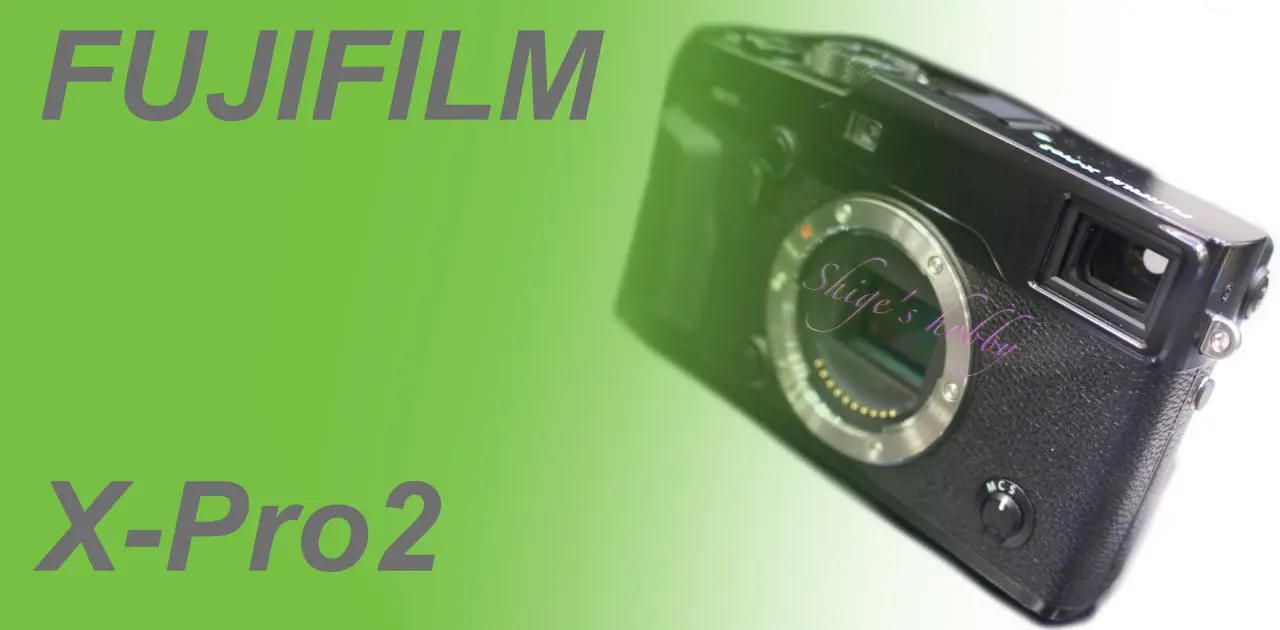2nd Gen: HVF FUJIFILM X-Pro2

A review and Photo Examples of the FUJIFILM X-Pro 2.
- Please see the disclaimer regarding advertising here.
- Italicized links in the text are advertisement links that take you to other sites.
Table of contents

Gallery
- The sample photos were taken with Carl Zeiss Touit 12mm, 32mm and 50mm macro lenses.
Review

1.Overview
The X-PRO2 is an interchangeable lens digital camera with an APS-C size sensor and a hybrid viewfinder (HVF) released by Fujifilm in 2016.
The sensor size is APS-C (1.5 times the 35mm equivalent), and it is equipped with a 24.2 megapixel X-Trans CMOS III sensor.
The recording media is SDXC standard SD cards, and the camera has a double slot that allows two SD cards to be inserted.
The battery is either the NP-W126 (1260mAh, 7.2V) or the successor NP-W126S.
The successor battery NP-W126S has a slight recess in the center to account for swelling due to aging of the lithium-ion battery. Both batteries have the same capacity.
The main feature of this camera is the second-generation hybrid multi-viewfinder, which is an elaborate viewfinder that can be switched between an LCD viewfinder (hereinafter referred to as EVF) and an optical viewfinder (hereinafter referred to as OVF).
2.Usage
I bought the X-Pro1 as soon as it was released in 2016. I bought it because I wanted to use the following three Carl Zeiss X-mount lenses with this body. These three lenses are wide-angle, standard, and macro, making it a set that will not cause any inconvenience for general photography.
- Touit 12mm F2.8 > 18mm equivalent
- Touit 32mm F1.4 > 48mm equivalent
- Touit 50mm F2.8 Macro > 75mm equivalent
The Carl Zeiss Touit series is also available in Sony E-mount, and although I had a Sony APS-C body, I chose the X-Pro2 because I wanted to experience the collaboration between the Fujifilm image sensor and Carl Zeiss.
Looking at the results, the combination of the Zeiss image and the Fuji sensor seems to overproduce the image, but all of the lenses have good color development, the 12mm resolves to the corners despite being an ultra-wide-angle lens, the 32mm standard lens has a unique softness, and the 50mm medium telephoto macro shows detailed depiction typical of a macro lens.
If I had only owned this camera, I could have enjoyed it for a long time with the set of these three, but it was too much as a sub-camera, so I gave up on the system after using it for a while.
In addition, with my shooting style, I rarely use the OVF, even in the second generation, which is a hybrid viewfinder that is a feature of the X-Pro2, and I could not find a situation where I would use the OVF at the expense of the convenience of the EVF.
3.Summary
In conclusion, to sum up the X-Pro2, the hybrid viewfinder (HVF) is an interesting gimmick, but its presence is half-baked and has little practical use.
Even if you spend money to implement an optical viewfinder in a digital camera, it has little practical value, and it reminds you of the advantages of EVF.
The rangefinder of the M-type Leica is a traditional art and a completely different entity.
Side talk
Fujifilm seems to be focusing on the X series, which only has an EVF and sells in large numbers to the general public, and has a large profit margin, and the cameras in that series have been smoothly updated through generational changes.
The X-Pro series, which is equipped with a hybrid viewfinder, has high manufacturing costs and tends to be expensive, and it is purchased by enthusiasts, so sales volume is difficult to increase. If the X-Pro series could be priced at the same level as the Leica M, it might be possible to continue small-scale sales, but since it does not have the brand power and product power to do so, it is in a difficult position within the X series and no new camera bodies have been released since the X-Pro3 at the end of 2019.
As for cameras equipped with APS-C size sensors, the X-H2 equipped with a 40-megapixel sensor was released in 2022, and development of a new sensor has ended.
The X100IV equipped with a hybrid viewfinder similar to the X-Pro series was released in 2024 equipped with that 40-megapixel sensor.
In the past, the Pro series had a release cycle of X-Pro1 in 2012, X-Pro2 in 2016, X-Pro3 at the end of 2019, and no X-Pro4 in 2024. I was hoping that the X-Pro4 would be announced at CP+2025 at the end of February 2025, but no announcement was made.
I purchased X-Pro series 1 and 2, but the release date of X-Pro3 was uncertain, there was nothing new about the camera’s functions, and the pixel count stopped at around 20 megapixels, so I did not end up purchasing it.
Specification
| Items | X-Pro1 | X-Pro2 | X-Pro3 |
| Number of pixels | 16.3 MP | 24.3 MP | 26.1 MP |
| Image Sensor Type | X-Trans CMOS | X-Trans CMOS III | X-Trans CMOS 4 |
| Image Sensor Size | APS-C | APS-C | APS-C |
| OVF | Electronic bright frame finder (reverse Galilean type) Shooting range frame coverage rate approx. 90% Finder magnification approx. 0.37x/approx. 0.60x | Electronic bright frame finder (reverse Galilean type) Shooting range frame coverage rate approx. 92% Finder magnification approx. 0.36x/approx. 0.60x | Electronic bright frame finder (reverse Galilean type) Shooting range frame coverage rate approx. 95% Finder magnification approx. 0.52x |
| EVF | 0.47-inch TFT color LCD approx. 1.44 million dots approx. 100% field of view | 0.48-inch TFT color LCD approx. 2.36 million dots approx. 100% field of view | 0.5-inch organic EL approx. 3.69 million dots approx. 100% field of view |
| Rear LCD Size | 3 | 3 | 3 |
| Rear LCD resolution | 1.23 million dots | 1.62 million dots | 1.62 million dots |
| Battery | FW-126 / FW-126S | FW-126 / FW-126S | FW-126S |
| Recorded media | SDXC Single slot | SDXC Double slot | SDXC Double slot |
| Size W x H x D | 139.5 x 81.8 x 42.5 | 140.5 x 82.8 x 45.9 | 140.5 x 82.8 x 46.1 |
| Weight (g) (including memory card and battery) | 450 | 495 | 497 |
| Release date | 2012.2.18 | 2016.3.3 | 2019.11.28 |
| Color | Black | Black Graphite | Black DR Black DR Silver |
Options
- Hand grip: MHG-XPro2
- Leather case: BLC-XPro2
- Clip-on flash
- EF-X20
- EF-20
- EF-42
- Thumbs Up:EP-XP2
Reference links
- X-PRO1 Official Manual PDF
- X-PRO2 Official Manual PDF
- X-PRO3 Official Website
- Fujifilm X-Pro 1 WORLD – A new era of viewfinder camera (Nippon Camera MOOK) MOOK – 2012/9/29・Amazon Affiliate Link
- FUJIFILM X-Pro2 Perfect Guide (Genkosha MOOK) Amazon Affiliate Link
- Metabones Speed booster
Update history
- 2025.5.8
- 2024.012.27
Affiliate Links
- Please see the disclaimer regarding advertising here.
- Italicized links in the text are advertisement links that take you to other sites.
- Amazon Affiliate Link: Fujifilm Camera
- Amazon affiliate link: Fujifilm interchangeable lenses
- Amazon Affiliate Links Fujifilm Books

Leave a Reply